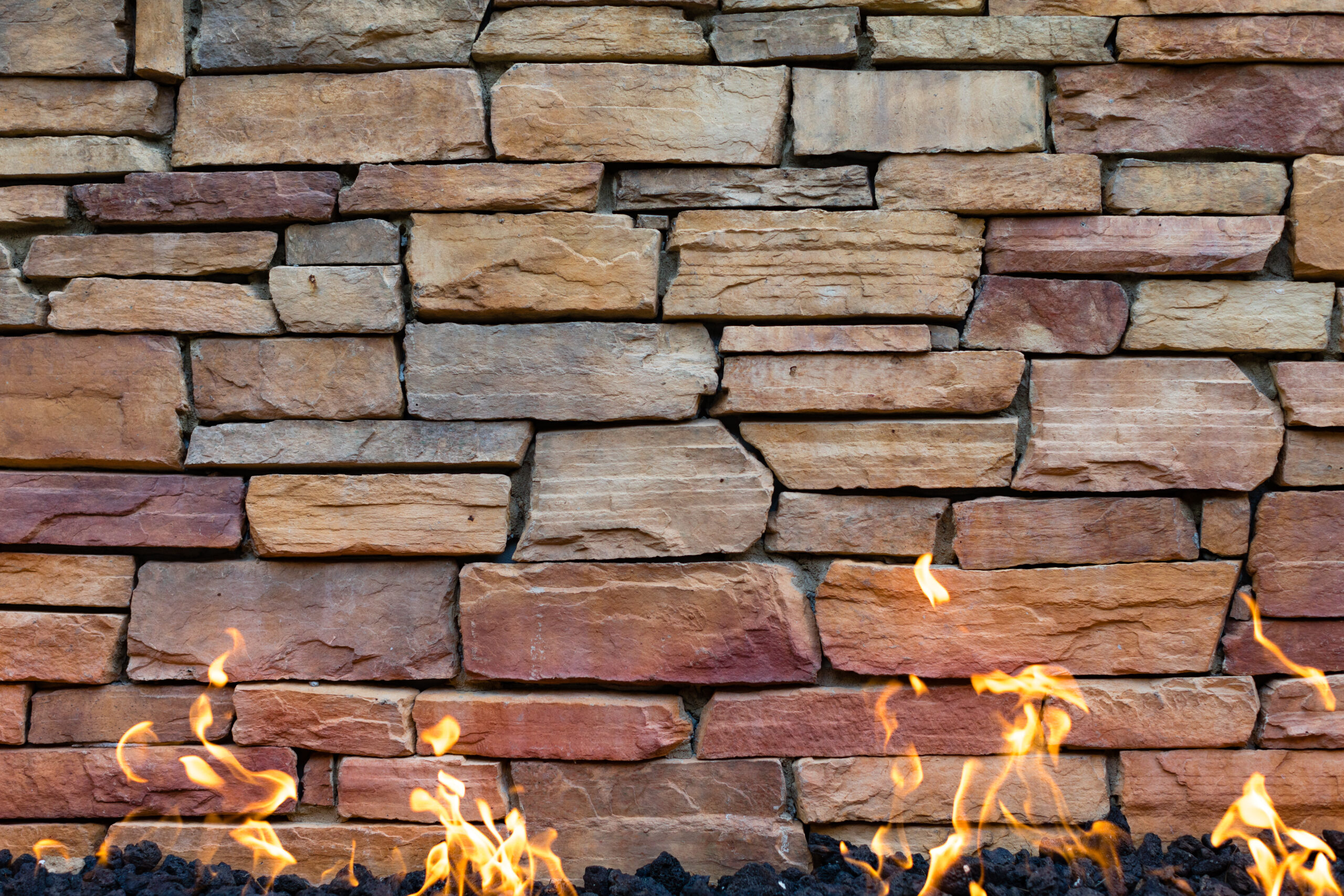
18 Oct The Ultimate Guide to Choosing the Perfect Fire Feature For Your Nebraska Home
Let’s face it, life can be a daily whirlwind of stress. Whether it’s the daily commute, cooking meals, managing household chores, or taking care of loved ones, finding moments of tranquility and joy is essential. While we can’t always escape to exotic vacations or frequent spa days, we can create a haven right in our own backyards.
Just picture coming home, stepping outside, pouring a glass of your favorite wine, and snuggling up by the cozy fire pit on your patio. Or, think about those fun Husker game days when your friends and family gather around the warm fire pit on a crisp autumn day. Everyone finds a comfy spot, cheering on their favorite team, while the kids have a blast roasting hot dogs and marshmallows. In these moments, stress simply melts away, and life becomes a little more blissful!
But, you might be wondering, which fire pit is the perfect match for you, your family, and your unique lifestyle? Follow our ultimate guide to find out!
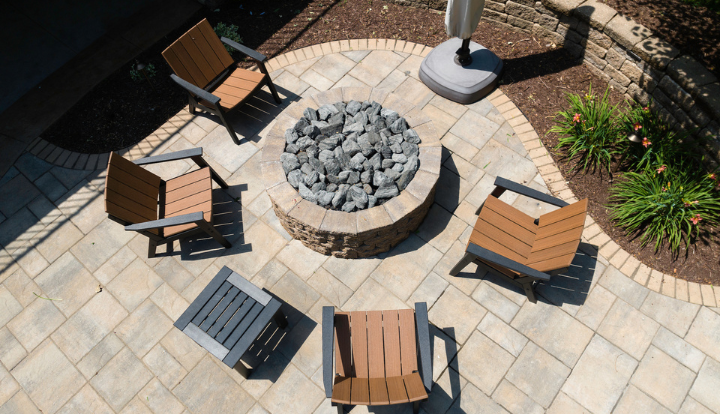
Styles of Fire Features
Choosing the perfect fire feature for your Nebraska home begins with understanding the diverse range of styles available. From classic fireplaces to modern tabletop fire pits, there’s a fire feature to suit every taste and aesthetic.
Each fire feature type has its unique fueling options and construction materials, allowing you to customize your selection to your specific needs, budget, and lifestyle. Here’s a quick overview of some of the most popular fire feature styles:
- Fireplaces: A fixed structure with a hearth and chimney for burning wood or other fuel.
- Ring Fire Pits: A circular fire pit with a raised ring around the outside to contain the fire.
- Bowl Fire Pits: A simple and modern fire pit in the shape of a metal, concrete, clay, or stone.
- Tabletop Fire Pits: A small fire pit that is designed to be placed on a table or other surface.
- Tiki Torches: These modernized torches are tall, slender, and made of metal with a tiki-themed design at the top.
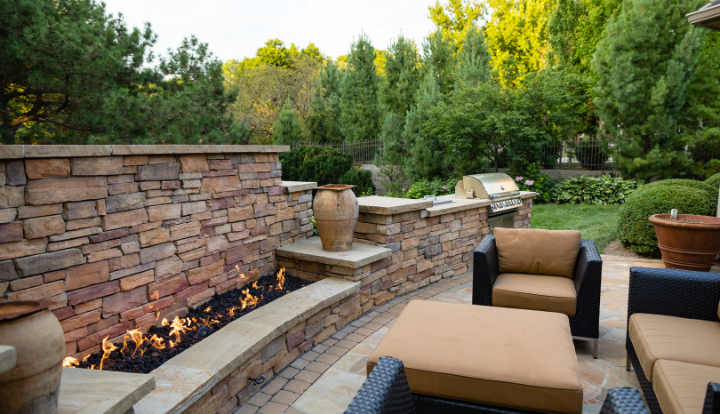
Materials and Construction of Fire Features
Fire pits can be made from a variety of materials, including concrete, metal, stone, and brick. The best material for your fire pit will depend on your personal preferences, budget, and overall style of your outdoor space.
- Concrete: Concrete is a popular choice for fire pits because it is durable, affordable, and can be customized to match any style. Concrete fire pits can be finished in a variety of colors and textures, and can even be stamped to resemble wood or stone.
- Metal: These fire pits are another popular option. Metal fire pits are lightweight and portable, making them easy to move around your yard. They are also relatively affordable and come in a variety of styles, from traditional to modern.
- Stone and brick: These types of fire features are the most expensive options but also the most durable and long-lasting. Stone and brick fire pits add a touch of elegance to any outdoor space.
At Sun Valley Landscaping, we proudly partner with Watkins Concrete Block, a trusted local supplier known for delivering high-quality materials to meet the needs of our valued clients!
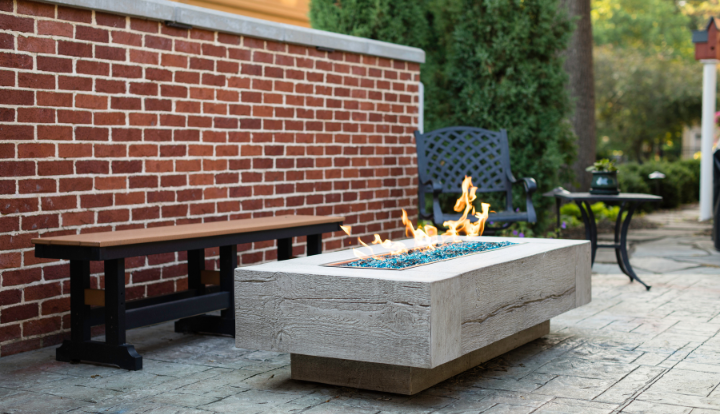
How to Fuel Your Fire Feature
Once you’ve chosen the perfect fire feature style, it’s time to consider how you’ll fuel it. The most common options are wood-burning, gas, and portable. Here are the three common ways to fuel your fire feature and give it that spark:
- Wood-burning Fire Features
Wood-burning fire pits are a more traditional type of fire pit that uses wood as its fuel source.
- Pros: Wood-burning fire pits are a natural and inviting fire feature that can come in a variety of forms. They are also a cost-effective option in the long run, as wood is a relatively inexpensive fuel.
- Cons: Wood-burning fire pits produce smoke, which can be a nuisance for neighbors. They also require regular maintenance, such as cleaning out ashes and removing charred wood.
- Gas Fire Features
Gas fire pits are a type of fire pit that uses natural gas or propane as its fuel source.
- Pros: Gas fire pits are easy to use and maintain, as they can simply be turned on and lit. They produce less smoke and emissions than wood-burning fire pits, and they are generally safer, as they produce fewer sparks and have fewer issues with flames.
- Cons: Gas fire pits require gas lines and a propane tank, which can be a more expensive option.
- Portable Fire Features
Portable fireplaces are a type of fireplace that can be easily moved around and set up anywhere. They are typically smaller and lighter than traditional fire pits and can be powered by a variety of fuels, including wood, gas, and electricity.
- Pros: Portable fire pits are versatile and can be used in a variety of locations. They are also easy to set up and take down, and they are typically less expensive than permanent fire pits. This style is perfect for someone who likes to rearrange furniture!
- Cons: Portable fire pits are less durable than permanent ones and may need to be replaced more often, especially with frequent use. Additionally, they can leave burn marks or damage to the surface they sit on, so choosing the right location is important.
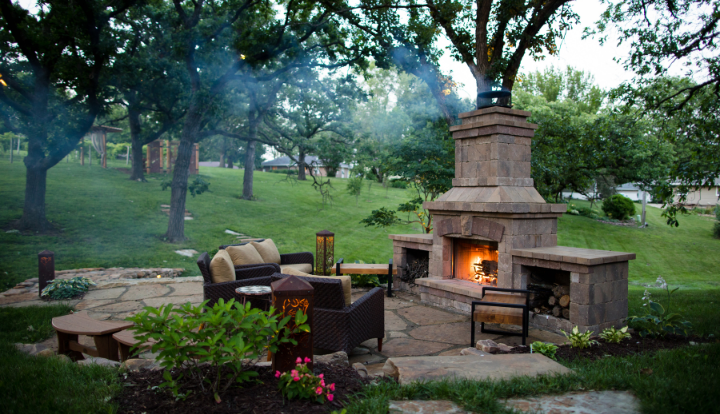
Design Considerations
Once you’ve decided that a fire pit is the perfect addition to your outdoor space and have a specific one in mind, we’ll introduce you to one of our talented designers. They’re here to understand your lifestyle and the character of your outdoor area.
Just like the various rooms in our homes have their own unique functions and atmospheres, the same applies to our outdoor spaces. It’s essential to get a clear picture to ensure you’re delighted with the design for years to come. Here are some things you and your designer will explore together:
Personal Style:
- The colors, style, and aesthetic you like indoors and outdoors.
- The number of people you typically entertain in your outdoor space.
- Your hosting style, whether you’re a sociable host or more introverted.
- Imagine how you envision yourself enjoying this outdoor space.
Space Requirements:
- Assess the size and layout of your outdoor area
- Proximity to structures, trees, or flammable objects.
- Think about ventilation in your chosen location.
- Decide where you want your fire pit to be placed.
- Consider any seating arrangements you’d like to incorporate.
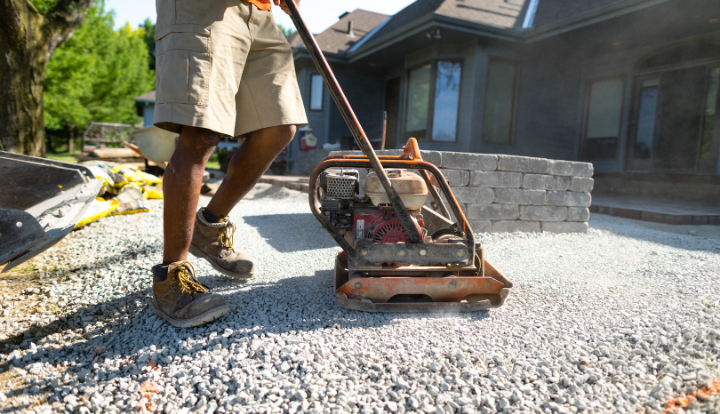
Building Process
The construction phase may not be the most glamorous, but it’s vital for the safety and stability of your fire feature. Here’s how the Sun Valley Landscaping team makes sure it’s done right:
- Site Preparation: Our team excavates and prepares the ground based on your chosen fire pit type. For gas fire pits, we dig at least eight inches below the gas sleeve service line to accommodate proper gas connection.
- Patio Creation: We build the patio on the prepared site.
- Fire Pit Placement: Your fire pit is positioned on the patio or designated location. If accessibility or weight poses challenges, we may use a crane for precise placement.
- Subcontractor Coordination: We understand the hassle of coordinating subcontractors, so we take care of it for you. We bring in plumbers or electricians to handle underground work and electrical connections, including installing burner rings, keys, and electric ignition systems in the fire pit.
Ready to Light Up Those Nebraska Nights?
If you’re ready to spend your nights cozied up by a warm fire, wine in hand, and the Huskers playing in the background, it’s time to invest in the perfect fire pit for your Nebraska home.
Get in touch with our designers at Sun Valley Landscaping to transform your outdoor space into a cozy place to spend the fall season!


